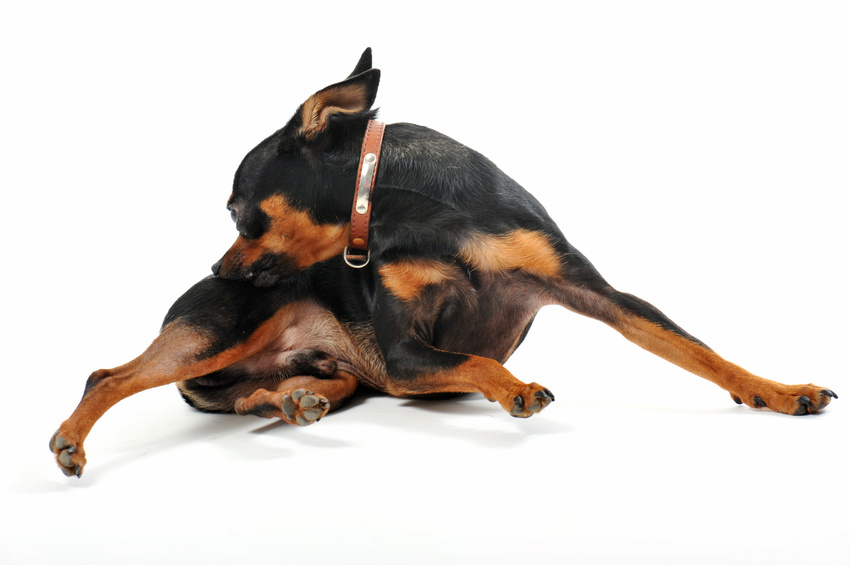Hot Spots – What are they?
What is a Hot Spot?
A Hot Spot is a moist, shiny, red patch of skin that often has an adherent crust. They commonly occur around the base of the tail and around the mouth but can appear anywhere on the body.
What causes Hot Spots and what breeds are typically affected?
There are many different causes of hot spots, including flea bite hypersensitivity, allergies, impacted anal glands and ear infections. Basically, any painful or uncomfortable condition leading to self-trauma of the skin has the potential to cause a Hot Spot.
Although all breeds can get Hot Spots, they tend to be more common in dogs with thick, long coats such as German Shepherds, Labradors and Golden Retrievers. As dogs chew and lick irritated areas the long thick coat traps moisture, creating a warm, humid environment close to the skin that allows bacteria, fungi and yeasts to thrive.
We have noted over the years that dogs that slobber often get hot spots on their cheeks or back of their necks. Slobbering and panting is more of an issue in summer than winter.
How are Hot Spots diagnosed?
Diagnosis is usually made by getting a detailed history (i.e. how long it has been there, is it spreading?) and looking closely at the area itself. Trying to find the underlying cause can help us to prevent hot spots returning or reduce recurrence of the problem. In some cases, it may be necessary to do further laboratory tests, especially for those that do not respond adequately to initial treatment.
How are Hot Spots treated?
There are a number of stages to treating hot spots:
- Clip and clean the area: removing the hair and debris will show how large the Hot Spot really is and allow it to dry out thereby helping to destroy the environment that the bacteria, yeasts and fungi love. It will also make the application of creams and shampoos much easier and more effective.
- Find and treat the cause: e.g. starting your pet on a suitable flea control program for Flea Bite Hypersensitivity or on arthritis medication where the inciting cause is joint pain. Sometimes finding the cause of your pet’s hotspot is very difficult and even if a cause is found it may not be able to be completely eliminated. This means that hot spots may return even though treatment has previously been successful.
- Treat the infection in the skin: some cases may be mild and once the area is cleaned and treated topically with cream the Hot Spot resolves. Unfortunately many cases require a course of antibiotics to treat deep bacterial infections in the skin.
- Prevention: We recommend use of Pyohex shampoo and leave in lotion to help prevent recurrence.




